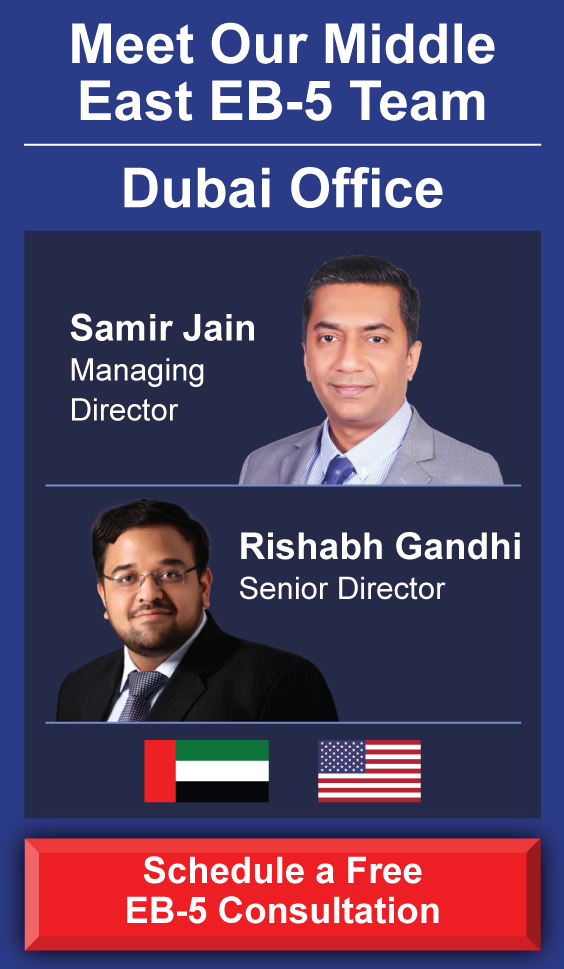What Are Regional Centers?
EB-5 regional centers are economic units created under the EB-5 Immigrant Investor Pilot Program that promote regional economic growth, job creation, and capital investment in the United States. Regional centers are approved by United States Citizenship and Immigration Services (USCIS), the agency of the Department of Homeland Security (DHS) responsible for the administration of the EB-5 Program.
The popularity of the EB-5 Program has resulted in a steady increase in the number of USCIS-designated regional centers—a number that currently stands at 865. But why might a business choose to pursue this designation, and what is involved in the application process?
Reasons to Apply for EB-5 Regional Center Designation
Developers interested in harnessing the low-interest financing available through the EB-5 Program can generally do so in one of two ways: they can rent a regional center or apply to USCIS for regional center designation.
Forming a regional center is, however, a complicated process, and any business considering the process should consult experienced EB-5 professionals. And while almost any business or organization may apply for regional center status, doing so may or may not be in that entity’s best interest.
How to Apply for EB-5 Regional Center Designation
In order to apply for regional center designation, a business must file Form I-924, pay the appropriate fee (currently $6,230) to USCIS, and submit all the necessary support documentation. The process of preparing these support documents is time consuming, complicated, and generally requires the assistance of several experts.
Following are the main steps a business must take to prepare its regional center application:
- Determine the regional center’s scope
- Prepare the regional center’s documentation
- Prepare project documentation
These steps are discussed in more detail below.
- Determine the regional center’s scope
One of the most important steps in the regional center application process is determining the scope of the regional center. Every regional center has a specific geographic coverage area that defines the boundaries within which it can sponsor projects.
In addition to its geographic scope, a regional center must have a specific industry scope that defines the types of projects the regional center may sponsor.
- Prepare the regional center’s documentation
- Prepare project documentation
Along with its application to form a regional center, a business must submit project documentation for either a hypothetical, actual, or exemplar project. This project documentation must generally include the following elements:
- A business plan
- An economic impact report
- Securities offering documents
Business plan
The type of business plan required by a project depends on the project’s level of readiness. Project readiness is divided into three categories: hypothetical, actual, and exemplar.
Hypothetical projects are those that are based on generalizations and not actual project proposals. These proposals demonstrate the kinds of projects regional centers anticipate sponsoring. For a hypothetical project, the business plan does not need to be compliant with Matter of Ho and instead contains general proposals and predictions. Such a business plan must simply demonstrate that the regional center will be engaged in projects that promote economic growth.
Actual project proposals are those that are based on real projects with verifiable information supported by economically sound forecasting to prove their viability. Such projects require comprehensive business plans that comply with Matter of Ho.
Exemplar projects proposals are actual projects that are accompanied by a sample Form I-526 and all the necessary transactional documents. Like actual projects, exemplar project proposals must have comprehensive business plans that comply with Matter of Ho.
Matter of Ho is an AAO precedent decision that has set the standards used by USCIS when reviewing EB-5 project business plans.
In order to be compliant with Matter of Ho, the plan must contain a market analysis that examines the target market and identifies the project’s competition specifically and compares their strengths, weaknesses, products, and pricing. The plan must also list any necessary permits and licenses.
As applicable, the business plan must include a description of the manufacturing and production processes related to the project as well as any materials required and the sources of those materials. Any contracts executed in relationship to the project’s sourcing of materials or product distribution must also be included.
The business plan should also include the business’s organizational structure, the experience of its personnel, the staffing requirements of the project along with job descriptions for these positions, and a timeline for hiring. Additionally, the plan should include projections of sales, costs, and income accompanied by the bases for these predictions. The business’s marketing strategy should also be detailed in the plan.
All of these elements must be prepared and presented in such a way that the business plan is credible, and so a professional business plan writer should be engaged who has specific experience in drafting plans that comply with the stringent requirements of the EB-5 Program.
Economic impact report
For actual and exemplar projects, the project documentation must include an economic report that calculates the economic impact of the project, specifically with regard to job creation and whether or not the project lies within a targeted employment area (TEA).
Perhaps the most important objective of the economic impact report is to calculate using reasonable economic methodologies the indirect and induced jobs created by the project. Indirect jobs are those created by the spending of the project on regional goods and services; induced jobs are those created by the local spending of the project’s employees. These types of job creation can only be calculated—they cannot be counted directly.
Because of the complex nature of the economic impact report—and because of how vital this report is to the success of an EB-5 project—a professional economist should be hired to perform the calculations and prepare the report.
Securities offering documents
For actual and exemplar project proposals, transactional documents related to the project’s investment offering must be included in the documentation submitted to USCIS. Specifically, for actual project proposals, a sample subscription agreement and sample private placement memorandum must be included. Exemplar project proposals must include final versions of these documents.
All securities-related documents submitted to USCIS must comply with applicable laws and regulations as administered by the Security and Exchange Commission (SEC).
In addition to these laws and regulations, EB-5 investments must meet the criteria of the EB-5 Program, particularly that invested capital remain “at risk” for the duration of the EB-5 process. This means that an EB-5 investment cannot be guaranteed a return and the funds must be irrevocably committed to the project.
These securities offering documents should be drafted by securities counsel, preferably with EB-5 experience.
Submitting Form I-924 and Awaiting Adjudication
Once the necessary documents are in place, a business can submit the complete application to USCIS for adjudication. The processing time for I-924 Petitions varies, but the average processing time is currently about 10 months. While awaiting adjudication, a prospective regional center may market its project—but until a business receives approval from USCIS, it cannot accept EB-5 investments.











